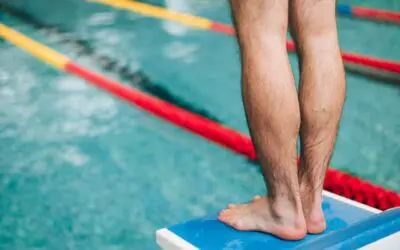If you have diabetes, you know that diabetic foot care is extremely important. The diagnosis of diabetes brings with it many troubling symptoms that affect the feet, including reduced blood flow to the lower extremities, nerve damage–a condition known as neuropathy–and slow healing from injuries. Because neuropathy can block all sensation in the feet and hands, you may not feel pain in these areas. While you can easily examine your hands for cuts and scrapes, you may be unaware when something is wrong with your feet. Open sores, known as diabetic ulcers form quickly. Ulcers on the soles of the feet can become infected, and because healing is slow in diabetics, these infections can lead to foot amputations.
Once an ulcer forms, health complications quickly follow. Prevention is the best medicine, but not long ago there were no strategies for detecting potential foot ulcers. The best tool for early detection is daily monitoring of your feet and regular foot examinations by a doctor. Although inflammation can manifest itself in redness, pain, and swelling, sometimes these symptoms are subtle, and if you have neuropathy you may not notice any of these, even with daily visual foot checks.
Inflammation is a clue that something is wrong, such as an injury or infection. Detecting inflammation when it first occurs is an excellent way to detect foot problems early. Because inflammation raises the surface temperature of the skin, temperature monitoring can help discover it. By regularly monitoring the temperature of the soles of the feet, inflammation can be detected early. By treating inflammation quickly, diabetic patients are able to prevent sores from forming, giving them better outcomes for overall foot health.
Here is a brief explanation of temperature-monitoring technologies that can successfully identify inflammation before it becomes a diabetic ulcer:
Infrared Thermography
This technology uses cameras that measure infrared radiation on the surface of the skin. The resulting thermal images show temperature variations on the soles of the feet, alerting the doctor to areas of concern. This is a non-invasive way to measure foot temperature, and is highly accurate. With infrared thermography, a podiatrist specializing in diabetes can monitor you regularly and safely in a clinic, thus avoiding the doctor’s office and cross-contamination from other patients.
Smart Insoles
These are devices with temperature sensors built into the insole fabric. The insoles monitor temperature continuously and transmit the data to a device worn on the body, similar to an insulin monitor, or to an app on your cell phone. The sensors are able to detect subtle variations in temperature, alerting the diabetic and your doctor to potential foot health issues. The insoles offer continuous monitoring and can be inserted into most shoes. The disadvantage of smart insoles is that you can only be monitored while wearing shoes.
Smart Socks
Similar to the insoles, these socks contain sensors which measure foot temperature continuously. All you have to do is wear them, which is ideal for monitoring at home, where shoes generally aren’t worn. The sensors in the socks detect changes in foot temperature, again transmitting data to an app or wearable device. Smart socks alert you and your doctor to potential foot health issues. They can also be washed and dried with normal laundry, making them more convenient than smart insoles.
Wearable Devices
As another option, small sensors can be attached directly to the soles of the feet. Like smart insoles and smart socks, they measure temperature and transmit the data to a device worn on the body or to an app on your cell phone. Unlike the insoles, which only work if you are wearing shoes, or smart socks, which may not be desirable to wear in hot weather, the wearable sensors can be used on bare feet. The continuous monitoring of foot temperature alerts you and your doctor to potential foot health issues. The disadvantage is that the sensors must be replaced often, so it takes time to manage this technique.
Wireless Foot Mat
Daily foot temperature monitoring can be achieved with an at-home device that you stand on for twenty seconds each day. The mat can detect changes in foot temperature accurately, alerting you to subtle changes. The advantage of this technology is that you don’t have to wear sensors, Smart insoles, or smart socks, or visit the clinic weekly for infrared thermography. The disadvantage is that the foot mat relies on you to be consistent about standing on the mat every day for accurate readings.
These devices bring hope to diabetics, who used to live in fear of developing ulcers and potentially losing one or both feet to amputation. Now that doctors understand that inflammation is the earliest indication of potential foot health problems, you have more tools available to help you avoid developing ulcers. Measuring foot temperature has made the prevention of ulcers a reality. If you do get an ulcer, a wound clinic in St. George, Utah specializing in diabetic ulcers can help you through the healing process.



